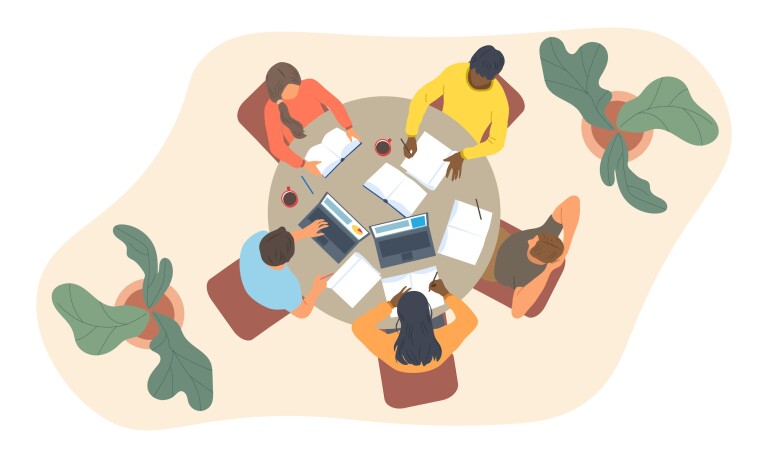Student-generated content—materials and tasks created by learners for other learners—can strengthen engagement by providing students an opportunity to express creativity, practice critical thinking, and increase ownership of learning. Developing student-generated content requires learners to produce an instructional artifact, demonstrating new knowledge alongside existing understanding. Student-generated content can include a variety of formats:
- Recorded presentations
- Video, audio, and/or podcasts
- Instructional materials, lessons, or tutorials
- Discussion or review questions and summaries
This piece summarizes the benefits of including student-generated content in your course. For more ways to increase student engagement, review these related Envision resources: Problem Based Learning, Project-Based Learning, and Authentic Activities.
Learning Benefits
Increased Student Motivation
Requiring learners to produce and present an embodiment of recently acquired knowledge increases investment in the course. Similarly, autonomy in the creation and presentation of a deliverable encourages students to explore and deepen their understanding of course content and identify areas of special interest. According to Steele (2022), “offering students other opportunities to contribute to the learning of their fellow students while also showcasing their own knowledge can be a[n] . . . impactful form of participation and fosters the ownership of classroom culture.”
Improved Learning Outcomes
A study in The Online Learning Journal illustrates the connection between student-produced videos and knowledge retention and transfer. The study saw “better class performance and learning gains” in those courses in which students were required to produce videos (Stanley & Zhang, 2018, p. 16). In another study, students identified the “key advantages as deeper language and text understanding, better retention of content, improved creative and analytical thinking, as well as higher perceived self-sufficiency” (Golechkova & Pletneva, 2021).
More Meaningful Interaction With Peers
Sharing student-generated content can positively impact community. Bolliger and Des Armier’s (2013) study on active learning environments demonstrated that the “integration of student-generated audio files [can] foster engagement and involvement” and “assist [students] in effectively connecting and communicating with peers” (p. 201).
References
Bolliger, D., & Des Armier, D., Jr. (2013). Active learning in the online environment: The integration of student-generated audio files. Active Learning in Higher Education, 14(3), 201–211.
Golechkova, T., & Pletneva, N. (2021). Enhancing student engagement through student-generated activities: Case study. 2021 IEEE International Conference on Educational Technology (ICET), 247–253.
Stanley, D., & Zhang, Y. (2018). Student-produced videos can enhance engagement and learning in the online environment. Online Learning, 22(2), 5–26.
Steele, J. (2022). What is student-generated content? Four examples to unlock the content experts on your campus. Suitable.

